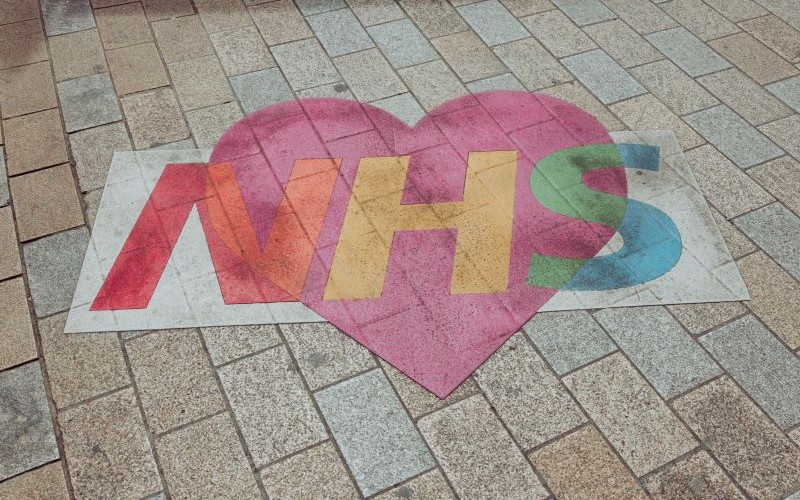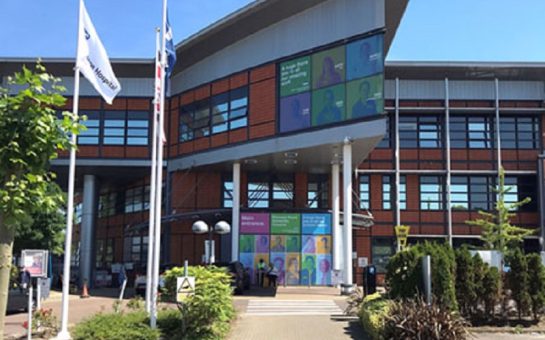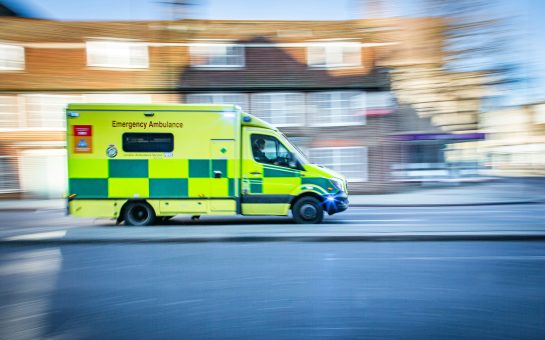As new NHS data reveals deep disparities in waiting times, patients from deprived and minority communities describe delays that leave them suffering in silence.
For Solaikkili Jeyaprasad, a Crohn’s patient from Greenford, the consequences have been devastating.
Jeyaprasad, 45, a Sri Lankan Tamil British man, has lived through what he describes as repeated missteps, long waits, and a drawn-out diagnostic process while managing Crohn’s disease.
“Sometimes, when you don’t get the right treatment for your illness… you feel like self-harming — that’s how bad it gets,” he said.
As patient advocates have long warned, in healthcare justice delayed is not only justice denied — it is a form of harm.
Jeyaprasad continued: “I had to use the toilet 15 to 20 times a day. I couldn’t go to work or meet friends — I was stuck at home just trying to survive the day.”
He lost 15kg in just three weeks.
With Crohn’s, even climbing stairs became unbearable.
“Sometimes I can’t even take five steps,” he said.
“It takes nearly 30 to 45 minutes to climb three floors. When the NHS tells you nothing is wrong, but you know your body is failing — it makes you feel completely left out.”
And his wife is now facing the same battle.
Jeyaprasad explained: “She has a stomach issue — and we’re still waiting.
“It’s been over three months since the scan, and we haven’t heard from anyone at the NHS – no follow-up, no appointment.
“She’s still suffering so much.”
New NHS England data shows that Asians or British Asians in the most deprived communities are more likely than any group to wait beyond 18 weeks for treatment.
This pattern was underscored in NHS England’s July release of stratified waiting list data, broken down by sex, age, ethnicity, and deprivation.
But as global health pioneer Dr. Paul Farmer observed, “the experience of suffering is not effectively conveyed by statistics or graphs” — something Jeyaprasad and his wife have experienced firsthand.
Women Waiting Longest
Over half of those on the waiting list are working-age — and 57% are women.
They are disproportionately affected by long delays, often waiting far beyond the 18-week benchmark, and in some cases up to a year or more.
Gynaecology is among the NHS’s worst-performing specialties. In 2024, the Royal College of Obstetricians and Gynaecologists reported that almost 591,000 women in England were waiting for care — including more than 31,000 for over a year.
By December 2024, nearly half of all gynaecology patients (44.6%) had been waiting beyond the 18-week target, with almost 19,000 still waiting after a year, according to a House of Commons Library briefing .
The human cost is clear. A 2024 study found that women in the UK wait an average of nine years for an endometriosis diagnosis — one of the longest delays in Europe .
Yet innovative solutions are emerging.
Dr Tamara Willows, a family medicine doctor and health systems researcher in the NHS, points to Women’s Health Hubs in Tower Hamlets — where GPs, specialists and community services are brought together — as a promising model for reducing inequities in women’s care.
“They show how services can be tailored to meet the needs of women in deprived, minority communities,” she said.
But Willows emphasizes that sustainable change requires a fundamental shift: listening to women themselves.
She points to the recent Black Maternity Experiences Report — the UK’s largest study of Black women’s maternity care — as a roadmap.
“One of the key lessons from the report is that we need to actually listen to women and create channels that allow them to tell us what we need to hear, then act on it,” she said.
Inequalities Deepen in Deprived Areas
The burden of prolonged waiting times and reduced access to timely care is greatest in England’s most deprived neighbourhoods, as indicated by the Index of Multiple Deprivation (IMD), where Quintile 1 represents communities experiencing the highest levels of socio-economic disadvantage.
Boroughs like Tower Hamlets, Newham and Barking & Dagenham fall into IMD Quintile 1 and are home to some of the country’s largest British Asian populations.
In Tower Hamlets alone, 44% of residents identify as Asian or Asian British, including a Bangladeshi population of 35% – the highest concentration in the UK.
The borough’s national deprivation ranking improved in 2019, but it remains among London’s most income-deprived areas.
The NHS’s current funding model for primary care — the Carr-Hill formula — allocates resources based mainly on the number of patients in each area, not the complexity of their health needs.
This means deprived communities, where illness is often more severe, receive less funding per patient, putting extra pressure on already-stretched GP services.
“The current funding formula doesn’t factor in the complexity of health problems people face in deprived areas,” said Dr Tamara Willows, a family medicine doctor and NHS health systems researcher.
“Primary care in those communities is under-resourced, which means more patients end up in secondary care — and that increases waiting times.”
Innovative local models are emerging to break this cycle.
Willows points to Deep End GP practices — collaborative networks designed to strengthen services in deprived areas — and the growing use of social prescribers who connect patients with housing advice, weight-loss support, and community groups addressing isolation.
“Both show how NHS teams can act on the data revealing disparities,” she said, though such initiatives remain patchwork solutions to a systemic problem.
A Two-Tier NHS?
Building on these disparities, recent peer-reviewed research from Professor Allyson Pollock and colleagues warns that the expansion of private providers within the NHS may be creating a ‘two-tier system’ – where those in wealthier areas access care more quickly, while poorer and more complex patients wait longer.
Dr Shailen Sutaria, a Physician and Consultant in Public Health Medicine, and an NIHR-funded Clinical Researcher at the London School of Hygiene & Tropical Medicine, said this pattern is already visible in practice.
Dr Sutaria continued: “Outsourcing of elective care continues to increase… with NHS provision being substituted for private provision, rather than addition – and this is impacting inequalities.”
A recent analysis of hip and knee replacement surgeries found that since private providers entered the NHS in 2003, the poorest patients have waited longer — and the gap is growing, especially after NHS capacity has contracted in favour of private providers.
The Digital Divide
Residents in IMD Q1 areas often encounter overlapping barriers when accessing care: structural, linguistic, cultural – and increasingly, digital.
Despite more than 33 million NHS App registrations, NHS Digital found that GP practices serving the most deprived neighbourhoods are currently 25 percent behind their counterparts in wealthier areas.
While digital platforms promise faster access to care, they are not experienced equally — and for many, they don’t feel like progress at all.
As Jeyaprasad said: “For me, yes, it’s helpful. But can my father use it? Can my mother use it? That’s the question.
“When it comes to sickness, people need human connection, talking to someone in person cures half the problem, the rest is medicine.”
Dr Sutaria agrees that digital innovation has potential — but only when designed with patients, not simply pushed to them.
“There are now a myriad of routes for accessing care — web or app platforms, 111, urgent treatment centres, emergency departments — and many people simply don’t know which one they are meant to use when they fall ill,” he said.
This decision fatigue often exacerbated by multiple NHS access routes is compounded by language barriers.
“Triage tools can also be unclear for people whose first language isn’t English.
“Some of the questions are poorly explained and, because many were developed by non-NHS parties, they tend to be overly risk-averse and weren’t tested with diverse populations,” he said.
And increasingly, it’s not just minority groups who are left behind.
“I worry about the old White British in high-deprivation areas,” Dr Sutaria said.
“They often don’t have close family networks and have limited understanding of digital pathways — so they may be impacted even more by digital-first policies.”
Designing Digital Care with Patients in Mind
In Tower Hamlets, those challenges are being tackled directly.
Sabba Hussain, Head of IT, AI and Digital Transformation for the borough’s GP Care Group, said her team relies on co-design with staff and residents to make tools workable in practice.
“A good approach is to start with tested NHS and GOV.UK design systems, then supplement with local engagement and short development cycles to get feedback quickly,” she explained.
One project simplified GP registration forms by building an accessible digital version with patient feedback — leading to improvements such as allowing multiple family members to register together, which later became a model for the national system.
For Hussain, digital innovation only works when it stays human-centred.
“We rarely rely on digital-only services. Even when a service is designed digitally, we run it alongside traditional options — like receptionists signposting patients — to ensure no one is excluded,” she said.
She argues that a major misconception among policymakers is the belief that digital tools alone can solve systemic challenges.
“A patient cannot book an appointment if they lack data, a reliable device, or digital literacy,” Hussain said.
“True digital transformation, particularly in deprived areas, is not about technology replacing human services but enhancing them.”
The most effective strategies view digital tools as part of a broader ecosystem — with human support, trusted community spaces, and training at the core.”
How the NHS is Responding
Asked about these disparities, a spokesperson for London Northwest University Healthcare NHS Trust said the organisation is working “closely with clinical and operational teams” to reduce waiting times and tackle health inequalities.
The Trust highlighted the opening of a £30 million Community Diagnostic Centre in Ealing, alongside new “one-stop” breast and urology services and an expansion of virtual wards that allow patients to receive specialist care from home.
It added that advice for virtual ward patients is now provided in multiple languages, and that digital partners are supporting those without Wi-Fi or smart devices.
Interpretation services and targeted initiatives — such as maternity translation support and proactive phone calls to patients before appointments — are being used to reduce missed attendances.
On the broader inequities, the Trust pointed to its “compound equity index,” described as the first of its kind in the NHS.
The index aggregates data across more than 30 indicators — including safety, timeliness, access, and patient experience — to track variations in care quality for different patient groups, with the aim of ensuring consistency regardless of gender, ethnicity or income.
“The most effective action we can take to reduce the impact on patients waiting for care is to reduce long waits as much as possible,” the spokesperson said.
The spokesperson added that patients whose conditions worsen are encouraged to contact their GP or hospital so their place on the list can be reviewed.
For patients like Jeyaprasad, the solution is straightforward.
He said: “Faster diagnosis, blood tests, MRIs, scans—all on the same day. That would be easier for everyone.”
Featured image: Nicolas J Leclercq, free to use under the Unsplash license.





Join the discussion